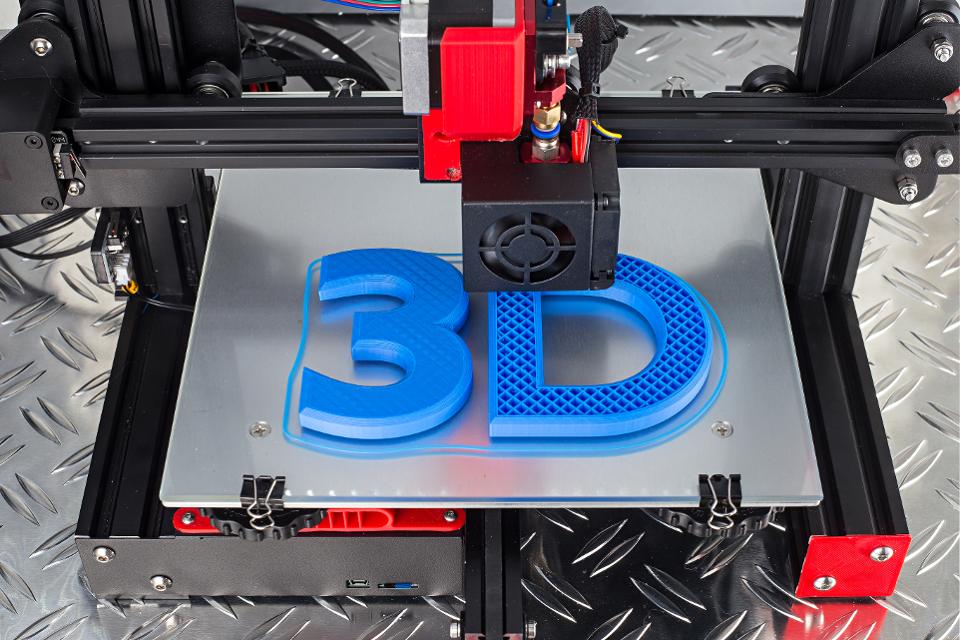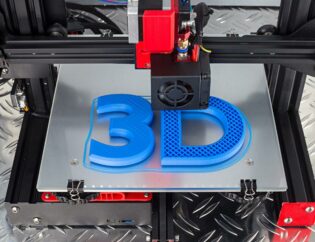
3D printing technology has evolved significantly over the past few decades, pushing the boundaries of what is possible in manufacturing and prototyping. One of the most exciting advancements in this field is 5-axis 3D printing. Unlike traditional 3D printing service, which typically operates on three axes (X, Y, and Z), 5-axis 3D printing adds two additional rotational axes, allowing for more complex geometries, improved surface finishes, and reduced need for support structures. This comprehensive guide delves into the specifics of 5-axis 3D printing in India, exploring its advantages, challenges, applications, and future potential.
What is 5-Axis 3D Printing?
5-axis 3D printing refers to the ability of a 3D printer to move the print head or the print bed along five different axes simultaneously. These axes include the traditional X, Y, and Z linear movements, as well as two additional rotational movements, often referred to as the A and B axes.
- X, Y, Z Axes: These are the standard linear movements found in most 3D printers, allowing the print head to move left-right (X), forward-backward (Y), and up-down (Z).
- A Axis: This rotational axis typically rotates around the X-axis.
- B Axis: This rotational axis typically rotates around the Y-axis.
How Does 5-Axis 3D Printing Work?
In a 5-axis 3D printer, the print head or the print bed can tilt and rotate, providing greater flexibility in how layers are deposited. This capability allows for printing complex geometries without the need for extensive support structures, as the print head can approach the part from multiple angles.
-
Simultaneous Movement: The printer's control system coordinates the movement of all five axes simultaneously, ensuring precise deposition of material.
-
Advanced Software: Specialized software is required to generate the toolpaths for 5-axis 3D printing Bangalore, taking into account the additional degrees of freedom.
Advantages of 5-Axis 3D Printing
-
Complex Geometries: The ability to print from multiple angles allows for the creation of intricate and complex geometries that would be challenging or impossible with traditional 3-axis printing.
-
Reduced Support Structures: By approaching the part from different angles, 5-axis printing can minimize or eliminate the need for support structures, reducing material waste and post-processing time.
-
Improved Surface Finish: The additional axes enable smoother surface finishes, as the print head can follow the contours of the part more closely.
-
Enhanced Strength: By optimizing the orientation of each layer, 5-axis 3D printing in Bangalore can improve the mechanical properties of the part, resulting in stronger and more durable prints.
-
Increased Efficiency: The ability to print complex parts in a single setup reduces the need for multiple print jobs and assembly, increasing overall efficiency.
Challenges of 5-Axis 3D Printing
Technical Complexity
The addition of two rotational axes introduces significant technical complexity, requiring advanced hardware and software to manage the simultaneous movement of all five axes.
-
Precision Control: Ensuring precise control of the print head or bed along five axes requires sophisticated control systems and high-quality components.
-
Calibration: Calibrating a 5-axis printer is more complex than a traditional 3-axis printer, requiring careful alignment and tuning of all axes.
Software Requirements
Generating toolpaths for 5-axis 3D printing service in Bangalore is more complex than for traditional 3D printing, necessitating specialized software capable of handling the additional degrees of freedom.
-
Toolpath Generation: The software must generate toolpaths that account for the rotational movements, ensuring accurate deposition of material.
-
Simulation and Verification: Advanced simulation and verification tools are needed to ensure that the generated toolpaths will produce the desired results without collisions or errors.
Cost
The advanced hardware and software required for 5-axis 3D printing services in India come at a higher cost compared to traditional 3-axis printers.
-
Initial Investment: The initial cost of a 5-axis 3D printer is typically higher due to the additional components and complexity.
-
Maintenance: Maintaining a 5-axis printer can be more expensive, as it requires specialized knowledge and parts.
Learning Curve
The increased complexity of 5-axis 3D printing introduces a steeper learning curve for users, requiring additional training and expertise.
-
Operator Training: Operators need to be trained in the use of 5-axis printers and the associated software, which can be time-consuming and costly.
-
Design Considerations: Designers must understand the capabilities and limitations of 5-axis printing to create models that take full advantage of the technology.
https://www.youtube.com/watch?v=lqxgfAbWB6U
Applications of 5-Axis 3D Printing
Aerospace
The aerospace industry is one of the primary beneficiaries of 5-axis 3D printing services in Bangalore, as it allows for the creation of complex, lightweight components with high strength-to-weight ratios.
-
Turbine Blades: 5-axis printing enables the production of intricate turbine blades with optimized geometries for improved performance.
-
Structural Components: The ability to print complex structural components reduces the need for assembly and improves overall strength and durability.
Automotive
In the automotive industry, 5-axis 3D printing is used to create complex parts with improved performance and reduced weight.
-
Engine Components: The technology allows for the production of intricate engine components with optimized geometries for better performance and efficiency.
-
Prototyping: 5-axis printing accelerates the prototyping process, enabling the rapid production of complex parts for testing and validation.
Medical
The medical field benefits from 5-axis 3D printing services in India through the creation of customized implants, prosthetics, and surgical tools.
-
Custom Implants: 5-axis printing allows for the production of patient-specific implants with complex geometries that match the patient's anatomy.
-
Surgical Tools: The technology enables the creation of intricate surgical tools with improved functionality and ergonomics.
Architecture and Construction
In architecture and construction, 5-axis 3D printing is used to create complex building components and structures with unique designs.
-
Architectural Models: The technology allows for the production of detailed architectural models with intricate geometries and surface finishes.
-
Building Components: 5-axis online 3D printing enables the creation of complex building components, such as facades and structural elements, with optimized designs for improved performance.
Art and Design
Artists and designers leverage 5-axis 3D printing to create intricate and unique pieces that push the boundaries of traditional manufacturing.
-
Sculptures: The technology allows for the creation of complex sculptures with intricate details and smooth surface finishes.
-
Custom Designs: 5-axis printing enables the production of custom designs with unique geometries and textures, expanding the creative possibilities for artists and designers.
Our manufacturing experience can help you make decisions faster.
Choose one to get started
Future Potential of 5-Axis 3D Printing
Advancements in Hardware
As technology continues to advance, we can expect to see improvements in the hardware used for 5-axis online 3D printing India, resulting in more precise and reliable machines.
-
Enhanced Precision: Advances in control systems and components will lead to greater precision and accuracy in 5-axis printing.
-
Increased Speed: Improvements in hardware will enable faster printing speeds, reducing production times and increasing efficiency.
Software Development
The development of more advanced software tools will make 5-axis online 3D printing Bangalore more accessible and user-friendly.
-
Simplified Toolpath Generation: New software tools will simplify the process of generating toolpaths for 5-axis printing, making it easier for users to create complex parts.
-
Improved Simulation and Verification: Enhanced simulation and verification tools will ensure that generated toolpaths produce the desired results without errors or collisions.
Integration with Other Technologies
The integration of 5-axis 3D printing with other technologies, such as artificial intelligence and machine learning, will unlock new possibilities for innovation and efficiency.
-
AI-Driven Design: Artificial intelligence can be used to optimize designs for 5-axis printing, improving performance and reducing material waste.
-
Automated Quality Control: Machine learning algorithms can be used to monitor and analyze the printing process, identifying and correcting errors in real-time.
Expanded Applications
As the technology matures, we can expect to see 5-axis 3D printing online being used in a wider range of industries and applications.
-
Consumer Products: The ability to create complex, customized products will drive the adoption of 5-axis printing in the consumer goods industry.
-
Education and Research: The technology will play a key role in education and research, enabling students and researchers to explore new possibilities in design and manufacturing.
Case Studies and Practical Examples
Case Study 1: Aerospace Component Manufacturing
A leading aerospace company implemented 5-axis 3D print online to produce complex turbine blades with optimized geometries. The technology allowed for the creation of intricate internal cooling channels, improving the efficiency and performance of the blades.
-
Results: The company achieved a 20% increase in turbine efficiency and a 15% reduction in production costs, demonstrating the potential of 5-axis printing in aerospace manufacturing.
Case Study 2: Custom Medical Implants
A medical device manufacturer used 5-axis 3D printing companies to create customized implants for patients with complex anatomical structures. The technology enabled the production of implants with precise geometries that matched the patient's anatomy, improving the fit and functionality of the implants.
-
Results: The company reported a 30% reduction in surgery times and a 25% increase in patient satisfaction, highlighting the benefits of 5-axis printing in the medical field.
Practical Example: Automotive Prototyping
An automotive manufacturer leveraged 5-axis affordable 3D printing services to accelerate the prototyping process for engine components. The technology allowed for the rapid production of complex parts with optimized geometries, enabling the company to test and validate new designs more quickly.
-
Results: The company reduced prototyping times by 40% and achieved a 10% improvement in engine performance, demonstrating the efficiency and effectiveness of 5-axis printing in automotive prototyping.
Best Practices for 5-Axis 3D Printing
Design Considerations
When designing for 5-axis 3D printing, it's important to take into account the capabilities and limitations of the technology.
-
Optimize Geometries: Design parts with optimized geometries that take advantage of the additional degrees of freedom provided by 5-axis printing.
-
Minimize Support Structures: Leverage the ability to print from multiple angles to minimize or eliminate the need for support structures.
Calibration and Maintenance
Proper calibration and maintenance are essential for ensuring the accuracy and reliability of a 5-axis 3D printer.
-
Regular Calibration: Regularly calibrate all five axes to ensure precise movement and accurate deposition of material.
-
Preventive Maintenance: Perform preventive maintenance on the printer's components to prevent wear and tear and ensure consistent performance.
Software and Toolpath Generation
Using the right software and generating accurate toolpaths are crucial for successful 5-axis 3D printing service.
-
Choose the Right Software: Select software that is specifically designed for 5-axis printing and offers advanced toolpath generation and simulation capabilities.
-
Verify Toolpaths: Use simulation and verification tools to ensure that the generated toolpaths will produce the desired results without errors or collisions.
Material Selection
Choosing the right material is important for achieving the desired properties and performance of the printed part.
-
Material Compatibility: Ensure that the selected material is compatible with the 5-axis printer and the intended application.
-
Mechanical Properties: Consider the mechanical properties of the material, such as strength, flexibility, and durability, to ensure that the printed part meets the required specifications.
Conclusion
5-axis 3D printing represents a significant advancement in additive manufacturing, offering the ability to create complex geometries, improve surface finishes, and reduce the need for support structures. While the technology introduces technical complexity and higher costs, its advantages in terms of design flexibility, efficiency, and performance make it a valuable tool for a wide range of industries and applications. As hardware and software continue to advance, and as the technology becomes more accessible, we can expect to see even greater adoption and innovation in the field of 5-axis 3D printing. This comprehensive guide provides the knowledge and insights needed to understand and leverage the potential of 5-axis 3D printing, ensuring successful and high-quality prints for your projects.


